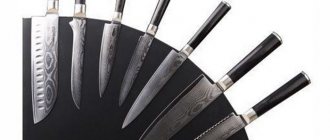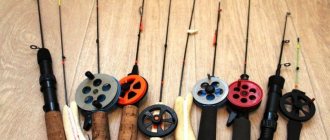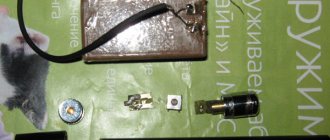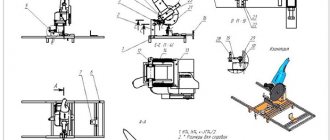Hello, dear friends! At one time, angel eyes on BMW cars made a splash on the market. It was optics of amazing beauty, especially in the dark. But even now fashion has not disappeared, and many people want to make angel eyes with their own hands.
In practice, there is nothing particularly complicated here. You will have to tinker, but the result will certainly please you. You can start from different instructions and manufacturing options. Some people use sites with videos that can be watched in parallel with taking notes in a notebook. Also on the Drive2 resource, motorists share their own experience of making peepholes, like those on a BMW.
I suggest you consider 3 interesting options. 2 of them are homemade and one more can be purchased online. The kit usually includes an ignition unit or a stabilizer, depending on the light source used.
First option
Often, when motorists want to make homemade angel eyes, LEDs are used. They perfectly complement the main beam headlights, and their installation does not cause much difficulty.
As for the set of materials and tools, here you will need to take:
Why are owners of cars with such tuning fined?
Owners of cars in which such tuning is legally included in the vehicle package should not be afraid of claims from law enforcement agencies. Everything here is legal, correct, fair. But when installing it yourself, you need to be guided by legal acts regulating the lighting of the front and rear of the car. In traffic rules, codes of offenses, government regulations and GOSTs regulating safety requirements for technical condition, angel eyes are not directly mentioned anywhere.
But there is a legal requirement according to which white lights can be used on the front of the car (dimensions and headlights), as well as orange lights for turning lights. Eyes of other colors are not allowed and will result in a fine.
Blue color is outlawed
Therefore, there is no need to install yellow, red, green, purple and other colors in the headlights. We can advise all drivers CAUTION: you need to install angel eyes CORRECTLY, although even this advice does not guarantee problems when passing a technical inspection.
Transportation of dangerous goods by road according to the rules
- 5 mm white LEDs;
- a resistor of approximately 330 Ohms and 0.25 W;
- wires for connection;
- plastic rod;
- or a plexiglass rod (diameter from 8 to 10 mm);
- jar or lid (1-3 liters);
- drill with adjustable speed;
- soldering iron;
- silicone glue;
- construction type hairdryer.
Take a rod of suitable length to make a ring out of it. You will need to make holes on the end sides for installing LEDs.
To avoid damaging the rod, it is recommended to wrap it in polyethylene or fabric and then fix it in the machine. This will ensure immobility and the ability to carefully make indentations without scratches.
Typically the holes are made with a diameter of about 6 millimeters. The depth depends on the design of the tube itself. But it is better not to exceed the value of 10 millimeters. To make the body take the shape of an optical device, you can take a jar or a lid from it. By bending around the jar, you will get a perfectly even ring. It is important that the diameter matches the internal diameter of the headlight itself on your car. Using a hair dryer, the body heats up and bends around the jar or its lid. There is no need to completely connect the ends of the tube to each other.
At the next stage, diodes are installed. Here you need to solder a wire of a suitable length to the terminals, which is enough to connect to the power wires outside the car headlight housing. A resistor is soldered onto one wire. As a result, you need to assemble an electrical circuit of LEDs with a serial connection and the resistor itself.
Now insert the diodes into the holes of your tube and secure with glue. The number of LEDs is determined individually.
In this case, you should not count on a bright glow and the ability to replace DRLs. The option is rather decorative.
Installation of angel eyes
After making or purchasing a set of glowing eyes, they need to be installed in the headlights. The installation process itself does not depend on the make of the car and on what kind of eyes are available: homemade LED or purchased CCFL tubes. The main thing is to be able to carefully disassemble and reassemble the headlights. To carry out the work you will need:
- construction hair dryer;
- transparent two-component glue;
- a set of screwdrivers and other tools.
The first step is to dismantle the headlights. There are no general rules in this matter, since each machine has design features and requires an individual approach. After dismantling, you should carefully inspect the headlight for the presence of latches at the junction of the two parts. Then it is placed on the table and for several minutes the seam area around the entire perimeter is heated with a hairdryer to warm up the sealant there. Only after this they start unpacking. It is better to do this work together, when one person holds the body and heats the seam with a hairdryer, and the second person gradually divides it into two parts.
You need to wear gloves when working with a disassembled headlight to avoid leaving fingerprints on the reflector.
Having separated the inner mask with the reflector from the glass, you can begin installing the first luminous eye. To do this, apply it to the mask and determine the location of the wires. Apply glue to the degreased surface of the ring, press it against the reflector and leave until completely dry. Glue the second ring in the same way. The headlight is assembled in the reverse order, heating the seam with a hairdryer and pressing the glass tightly against the body.
Please note that these instructions are general and only suitable for some types of headlights. Therefore, in each specific case, it is necessary to take into account the design features of the car.
Do-it-yourself car headlight polishing: affordable methods
- to Priora;
- Toyota Chaser 100;
- BMWs deprived of such a privilege;
- VAZ 2106;
- VAZ 2109;
- 2110;
- VAZ 2115;
- VAZ 2114;
- Renault Logan;
- Hyundai Solaris;
- Daewoo Lanos, etc.
Objectively, angel eyes look more advantageous on foreign cars. Although no one will forbid you to install such solutions on any machine.
To implement the task, you will need to prepare a slightly different set of materials and tools.
The following is required:
- double-density white LED strip, but without silicone coating;
- wires for connection;
- transparent silicone;
- glue;
- varnish (silver color);
- screwdriver;
- pliers;
- Have a good mood;
- extreme concentration and accuracy.
LED strips bend perfectly, which will allow you to easily make a ring of the required diameter. Just keep in mind that one headlight requires about 30-40 centimeters of tape.
Then the pads at one end are stripped to allow additional wires to be soldered there. They allow you to connect to a +12V power supply.
Next, a piece of tape is pointed onto a flat surface with the diodes facing upward. Gradually the tape is filled with transparent silicone. Do this slowly and carefully, armed with a mounting gun. This will allow you to coat the diodes with a uniform and even layer of silicone. It is important to wait for the resulting structure to dry completely, otherwise you will ruin everything with your own hands. Silicone will protect the product and act as a light diffuser.
To avoid wasting light illuminating the reflector, coat the back side of the tape with silver varnish. You can borrow it from your wife, sister or mother. Or buy it at your nearest store. The varnish will act as a reflector.
Connecting Angel Eyes
Angel eyes are an additional lighting device for a vehicle (vehicle) and inherently fall within the requirements for daytime running lights (DRLs). In accordance with clause 6.19.7 of GOST R 41.48-2004, running lights must turn on when the engine starts and turn off when it stops. In addition, turning on the headlights should lead to the DRLs turning off, so connecting the angel eyes must be done in accordance with a specific DRL connection diagram. It follows that the connection of angel eyes according to all the rules can be realized through a five-pin relay or through the DRL control unit.
To implement the first option, you will need female terminals (4 pcs.) and a 5-pin relay, the connection diagram of which is shown in the figure.
As can be seen from the diagram, the negative wire from the angel eyes is connected to the car body, and the positive terminal is soldered and connected to contact No. 30 of the relay. Then, under the hood, they find a wire connecting the side lights to the switch and run another wire with a terminal parallel to it, putting it on contact No. 85. Another long wire will run from the “Ignition + 12V” terminal block to contact No. 87a. The last one to connect contact No. 86 to the car body. During the connection process, all terminals, including unused terminal No. 87, are insulated using heat shrink tubing.
If an ignition unit (current stabilizer with LED rings) is supplied complete with CCFL rings, then it should be connected between the 30th pin of the relay and the eyes. In general, any LED DRLs must be operated together with a current or voltage stabilizer (for LED strips) to avoid the influence of voltage surges in the 12 V on-board network.
The second option involves connecting angel eyes through a DRL control unit (DRL controller), which can be purchased at any auto store. In this case, assembly is carried out in accordance with the diagram given in the instructions for the product. The use of industrially produced DRL control units is the best option for connecting angel eyes, as it is easy to assemble, provides overload protection and guarantees long-term, safe operation.
Third method
In theory, it is the simplest, since you are simply buying a ready-made device, which has a diffuser, an ignition unit and other necessary components. It’s just important to choose a quality product, since the Internet offers many options that are not of the best quality.
Eyes based on CCFL rings have proven themselves to be excellent. They have high reliability indicators and are in many ways superior to their LED counterparts.
If we talk about Aliexpress, then I would not advise you to buy ready-made angel eyes based on LEDs. Low-quality products are used here, which can quickly overheat when the head optics are turned on. As a result, in less than a year they will have to be removed due to the significantly reduced brightness level.
Decoration Features
Today, the simplest and most effective way to modify the exterior of a car is the so-called. "angel eyes" This tuning consists of luminous rings installed on the headlights. These rings are installed on the front optics of the car. For the first time, such a unique solution appeared on BMW products. After some time, luminous rings for headlights began to be sold as a separate vehicle upgrade. Note! Today, “Angel Eyes” can be either purchased in a store or made with your own hands. At the same time, their production is quite simple and many car enthusiasts prefer the second option for their car.
"Angelic" car tuning
It is worth noting that purchased angel eyes for a car are made from special neon tubes. They are bent and installed on the headlights. The installation also uses an ignition unit. After installing this optical system on the headlights, the light turns out more pleasant and bright. Separately, it is worth noting that some drivers use such tuning as daytime running lights or dimensions. Today, such car decoration is very popular and is very common. This is due to the fact that they can be installed on the headlights of a wide variety of car models (both domestic and foreign). For different car models, this type of tuning may differ in basic parameters:
- dimensions;
- glow color;
- ring diameter.
If everything is done right, you will get an exclusive car.
Results
With this method we get real angel eyes that glow with a continuous LED ring. If you attach the LEDs to the tube with electrical tape, then inside the ring there will be a gap without light, which will negatively affect the aesthetic appearance.
As you can see, the process is long and painstaking, but there are no particular difficulties here. You need basic knowledge of electrical engineering and tools, which should be available to every motorist working on his vehicle.
How to connect a voltage stabilizer (optional)
In the electrical on-board network of the car, the voltage “walks” from 12 to 16 volts. And LEDs do not tolerate such changes well. We soldered a resistor to each LED to regulate the voltage. But for more reliable protection you need a special stabilizer. It’s easier to buy a ready-made version and arrange it into a connection between the “angel eyes” and the on-board network of the car.
Factory version of the voltage stabilizer
If you are an “advanced” electrician, you can solder a simple stabilizer yourself. The L7812CV chip is used as a basis. See the photo below for the connection procedure.
The connection diagram is quite simple
According to this scheme, you need to connect the negative contact of the LED to the ground of the car, and the positive contact to the output of the stabilizer.
Video: connecting a voltage stabilizer for LEDs
The procedure for making and installing “angel eyes” is not easy. Before starting work, evaluate your abilities and capabilities to avoid possible additional costs. Consider whether your actions are legal and what consequences they may lead to. Neatness and cleanliness are required for successful completion of optics tuning. But everyone will notice your efforts.
Adjusting the parking brake on Kalina: the need for the procedure and step-by-step instructions
How to choose the best navigator. Instructions for flashing Prology iMap-400M
Eyes for toys made of polymer clay or plastic
The technique of creating toy eyes from plastic or polymer clay, in my opinion, is a little more complicated than from cabochons. But you can make any shape that suits you perfectly. Of all the master classes that I reviewed, I can highlight two options:
- Option 1: painting blanks made of polymer clay with varnish coating. The video below explains in detail how to do this. The essence of the method is simple - make a blank of the required size, bake it or boil it, draw the iris of the eye and cover it with varnish. The blank can be molded manually or using special molds.
- Option 2: using the same plastic or polymer clay blanks as in the first option, but adding an element of living eyes in the form of a transparent depressed pupil as in the photo below. A recess is made in the workpiece, which is painted and filled with epoxy resin.
- Option 3: we sculpt the desired eye shape from white plastic and press in a half-bead or cabochon with a drawn iris. The half-bead must be carefully removed with a needle. Then we bake or boil the eyes. Glue the half bead onto the prepared recesses. Can be coated with clear varnish on top.
Below I have collected a few more interesting master classes on designing eyes from plastic and polymer clay:
- How to make sparkly eyes from polymer clay
- An interesting way to make sewn eyes from polymer clay
- Making little eyes from polymer clay and beads
- Eyes for toys made of polymer clay and ready-made pupils
Eyes for toys made from scrap materials
There are times when you either don’t have the opportunity or simply don’t want to spend money on making eyes, then the most common available materials come to the rescue.
Such as:
- pins, beads and beads;
- nuts (great option for steampunk or robot style);
- buttons (wooden ones look especially beautiful)
- empty blister packs from tablets (don’t forget to wash them from medicines);
- plastic spoons (can be painted and varnished)
- Pebbles from the sea, etc.
I will not describe each option in detail, but will show only two of them.
Eyes for toys made of plastic spoons
The easiest way to make eyes is to use oval scoops from disposable plastic spoons. This item is suitable for a large soft toy and a large doll. To work you will need two plastic spoons, acrylic paints, double-sided tape and sandpaper
The work doesn't take much time. The surface of the oval part of the spoon is sanded, which will enhance the adhesion of acrylic paint.
The part is mounted on double-sided tape and is used to attach it to the surface of the cardboard. Future eyes are ready to be decorated with acrylic paints:
- The first layer is a white tone. Next, green or blue outlines of the irises are depicted.
- The pupils and the outline of the iris are painted in black.
- White paint is used for highlights,
- for eyelids - flesh-colored paint. The work is done.
Homemade eyes from empty pill blisters
For work you will also need “Super Glue” or “Moment”, and for the “pupils” - dark buttons, sequins, beads, etc. The base of the eye is made of white cardboard.
Everything is brilliantly simple:
- We take empty blisters of tablets. Packages of round tablets are best suited.
- We clean the packages from foil. It is not recommended to cut an empty blister into pieces. The base sticks better to a solid package.
- A “pupil” is placed in each cell. Its function can be performed by buttons, beads, beads, sequins and other similar materials. Don’t forget that the eyes are a paired organ, so make the number of “pupils” paired (two, four, six of each type). After all, you most likely won’t want to make the eyes for toys different.
- We glue the cardboard base to the blister with the “pupils” placed in it. It is better to take a universal glue, such as “Moment” or “Super glue”.
- After the glue has dried, the eyes are cut out and used for their intended purpose.
You can also insert a ready-made stencil into the cell and it will also turn out beautiful and unusual
As you can see, making eyes for toys from tablets is not at all difficult. It does not take much time and is not at all economically expensive. The eyes made in this way are practically no different from the factory ones. Often they are even more expressive due to the use of materials for the “pupils” of different colors and shapes.
Can I use red lenses?
Technically, the backlight can be any color, but don't choose blue and red. Traffic police officers regard the use of such colors in optics as an imitation of “flashing lights”, and will definitely want to talk to you about this. In extreme cases, they may even take the car to the impound lot. They react calmly to white, yellow or orange “angel eyes” (in most cases). Multi-colored lights are often considered by traffic police officers as a challenge and immediately cause an appropriate reaction.
What are the penalties for violation?
For those who like to argue, here are excerpts from the traffic rules.
clause 12.4 part 1 Installation on the front of the vehicle of lighting devices with red lights or red reflective devices, as well as lighting devices, the color of the lights and the operating mode of which do not comply with the requirements of the Basic provisions for the admission of a vehicle to operation and the duties of officials to ensure BJJ.
https://www.drive2.ru/c/1296154/
For those who are slow-witted, sanctions are provided in the form of fines:
- for citizens - 2.5 thousand rubles;
- for officials - from 15 to 20 thousand rubles;
- for legal entities - from 400 to 500 thousand rubles.
In addition, unauthorized devices and devices are confiscated. The violator also faces a ban on the operation of the vehicle with the removal of the seal.
Traffic police inspectors will probably issue a fine for such tuning.
Making eyes from wool
One of the most difficult eye creation techniques in my opinion. For this method, you will need the ability to felt wool and the necessary tools and materials for the work: a brush for felting, carding of the desired colors, needles for felting. For a detailed study of the technique, I advise you to look at this tutorial on felting eyes from wool .
SMD technology
SMD (Surface-mount LED). In this version, the LEDs are installed in a circle on a round board. They provide very high light output. There are many styles of these rings, depending on the number and size of LEDs. SMD LEDs are mounted in a circle and create a glow in individual points. Many people like this particular look, while others want the luminous rings to be more uniform and continuous. This is done using a diffusion housing that is placed on top of the LED ring. However, this creates additional heat build-up, which reduces the lifespan of the LEDs.
“Angel eyes” SMD without diffuser and with diffuser.
SMD LED angel eyes can be with resistors or adjustable. The most common method for making SMD LED angel eyes is to mount resistors directly on the ring to control the power that goes to the LEDs. This method is quite reliable, but under certain conditions the resistors on the ring itself may become subject to excessive heat. Additionally, voltage surges can occur in a car circuit, also adding voltage to the resistors. Over time, with constant voltage, resistors may fail or operate intermittently.
To completely eliminate the problem, LED rings have been developed that do not use resistors on the rings. There are only LEDs there. To provide constant current, a regulator unit is used, which is less susceptible to voltage and temperature changes. It is attached along the line between the power supply and the LED ring. This technology allows you to install more LEDs on each ring of angel eyes, which gives a more uniform glow. It is more convenient to mount such rings, since the reverse side does not contain resistors and fits well to any surface.
A few general notes
What one of the possible options for such tuning looks like is shown in the photo
How necessary such a change in appearance is is a purely individual matter. It is quite harmless, it even has a positive effect on safety, the car becomes more noticeable, and is also very popular. And although you can make angel eyes with your own hands quite simply, how will they harmonize with the overall appearance of the car? Won't it turn out that they will only cause smiles from outsiders?
According to established practice, angel eyes are usually made with your own hands using:
- LED rings or strip;
- light guide











